The Strange and Hidden Worlds of Mexico City
I remember a few days after the earthquake of September 19, 2017, I went to see Miguel Calderón at a space a friend had lent him. We tried to watch a few fragments of the video he had been working on about the life of Camaleón, its main character, a strange man who works by night as the bouncer at a bar and, by day, as a falconer. But I struggled to concentrate. I had arrived from Spain to Mexico just a few days prior and found myself in a state of shock on seeing the damage Mexico City had suffered. I remember photographing the cracks in the walls of the house Calderón was using as a studio in the neighborhood of Condesa.
Calderón was born in 1971, in Mexico City, and produces work—antiformal, and a bit anarchic—that is distinctive within the Mexican art world of the last few decades. He often displays tremendous freedom when it comes to his choice of medium, working across installation, video, photography, painting, music, and writing. At first glance, Calderón seems to be an artist who avoids dealing with major themes such as politics, the economy, ecology, or colonialism. But upon close viewing, larger concerns emerge: one’s search for meaning in life, the relationships between power and work, the energy of living beings, and also the underlying power of things.
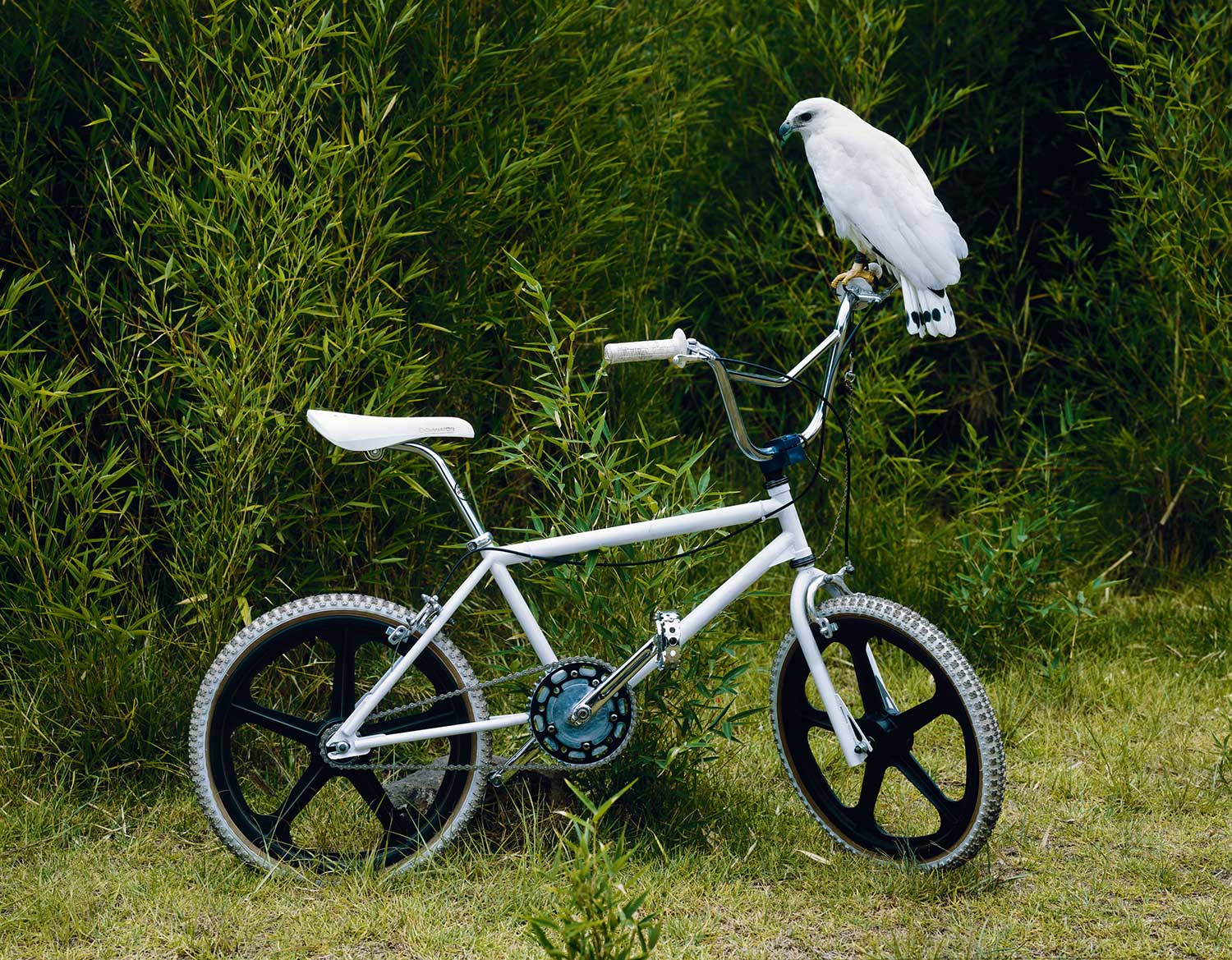
Courtesy the artist and Kurimanzutto, Mexico City/New York
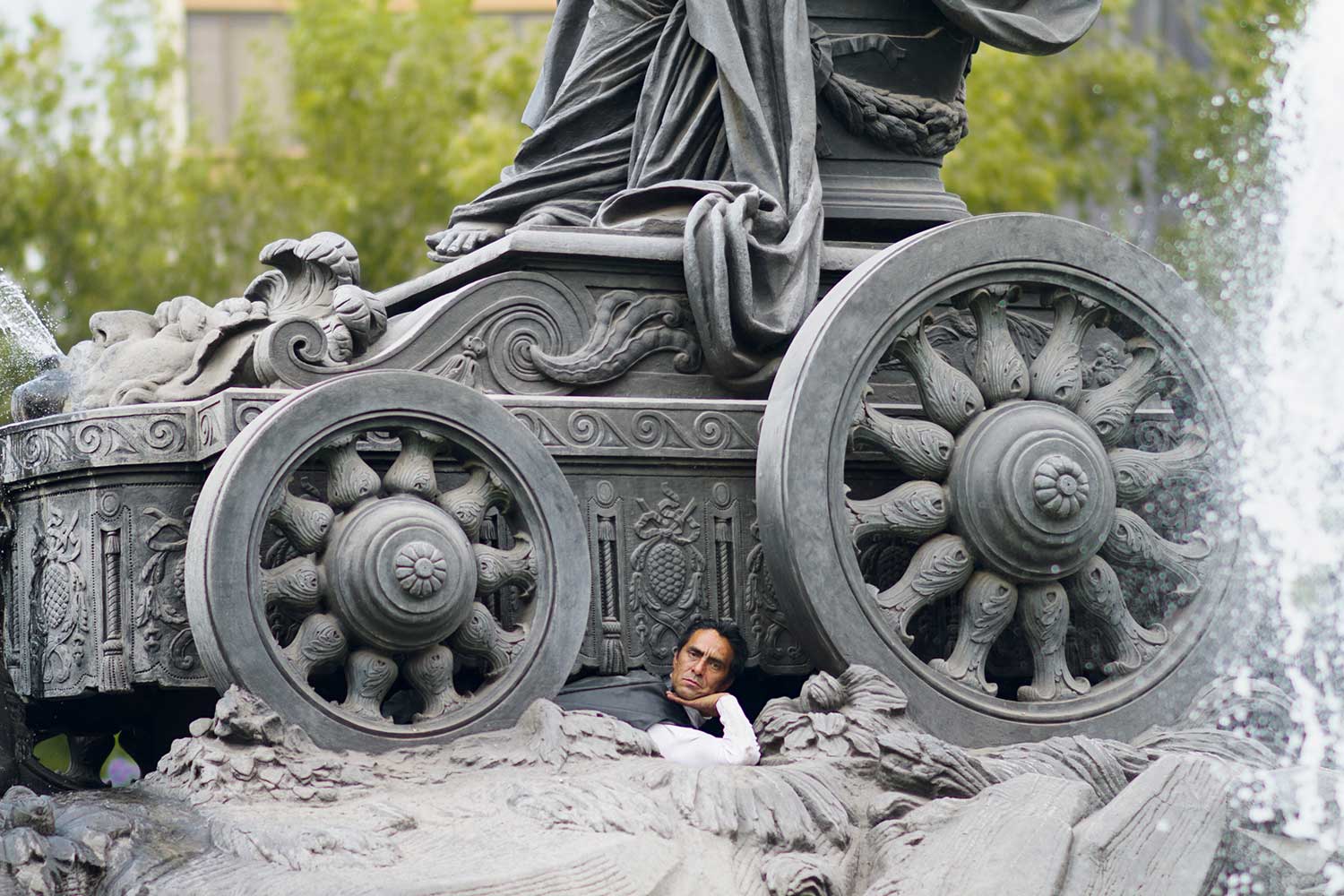
Courtesy the artist and Kurimanzutto, Mexico City/New York
In a recent video and photographic project titled El placer después (Pleasure afterward), Calderón uncovers the well-kept secret of a man—somewhere between watchman and indigent—who has lived for many years, without anyone noticing, in a space underneath the Fountain of Cibeles in the neighborhood of Roma, which, along with Condesa, was among the most damaged in the earthquake. The fountain, a replica of one in Madrid, was a gift to Mexico City by exiled Spanish Republicans to thank their hosts for their hospitality during the Spanish Civil War. In one image, the man’s face peeks out, his arm propping up his head in the position of The Thinker. (Other pictures reveal the subterranean space beneath the public monument.) Calderón struck up a friendship with this person who, until the recent earthquake, tended to the maintenance of the fountain dedicated to the goddess Cybele, cleaning her and ensuring her upkeep. He also re-created a scene he had witnessed in which two drunk tourists from the United States crashed their car and went swimming in the fountain.
Whether because of luck, or serendipity, or connection, or empathy, Calderón unlocks and discovers hidden worlds, strange beings, and unusual situations throughout the city. Policemen on motorcycles attempt and fail at complex balancing exercises in their effort to create a perfect human triangle. A man swallows a young woman’s hand, reminding us of François Rabelais’s Pantagruel or Francisco Goya’s painting Saturn Devouring His Son. A body falls through a hole in the asphalt. A finger is disguised as a Swiss Army knife. All are examples of the aplomb, accident, and sense of humor with which the artist constructs certain images. Sometimes his work borders on writing, not only because of its characters and situations but also because of the method he uses to re-create images he saw, or thought he saw.
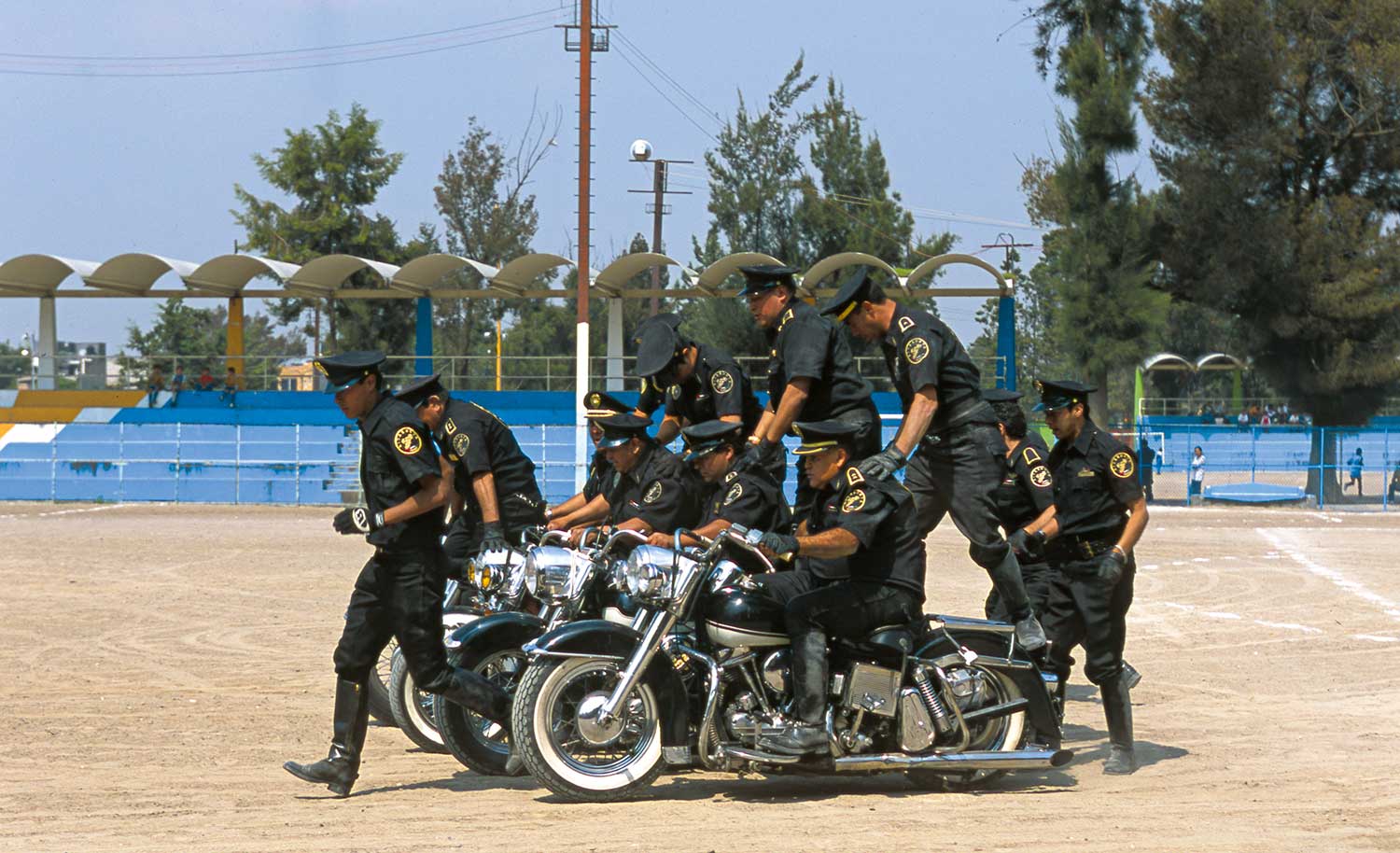
Courtesy the artist and Kurimanzutto, Mexico City/New York
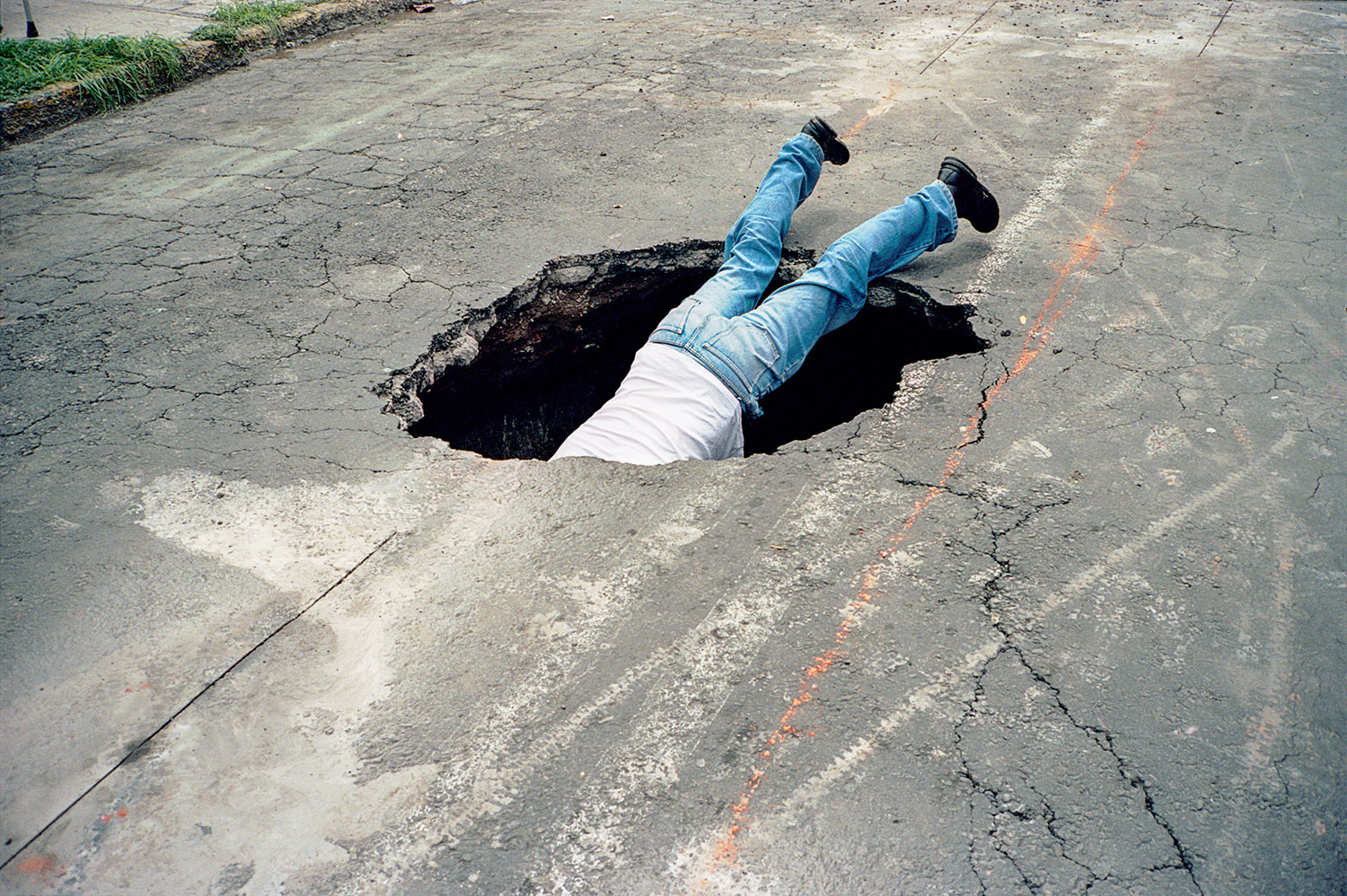
Courtesy the artist and Kurimanzutto, Mexico City/New York
Calderón’s knack for penetrating obscure worlds and rituals is also evident in his series of photographs depicting birds. In these images, we enter a universe of people who dedicate themselves to breeding and taking care of falcons, eagles, hawks, and other birds of prey. This age-old practice comes from the East, likely China. Calderón’s interest in birds goes back to his childhood when, by chance, he saw a falcon for the first time in a pet shop. He was so seduced and obsessed by the sight of this animal that, in order to obtain it, he bet his first creation—a one-of-a-kind bicycle he had built. Calderón managed to win the falcon and keep the bicycle. The intense relationship he forged with the animal proved essential in his period of adolescent discovery.
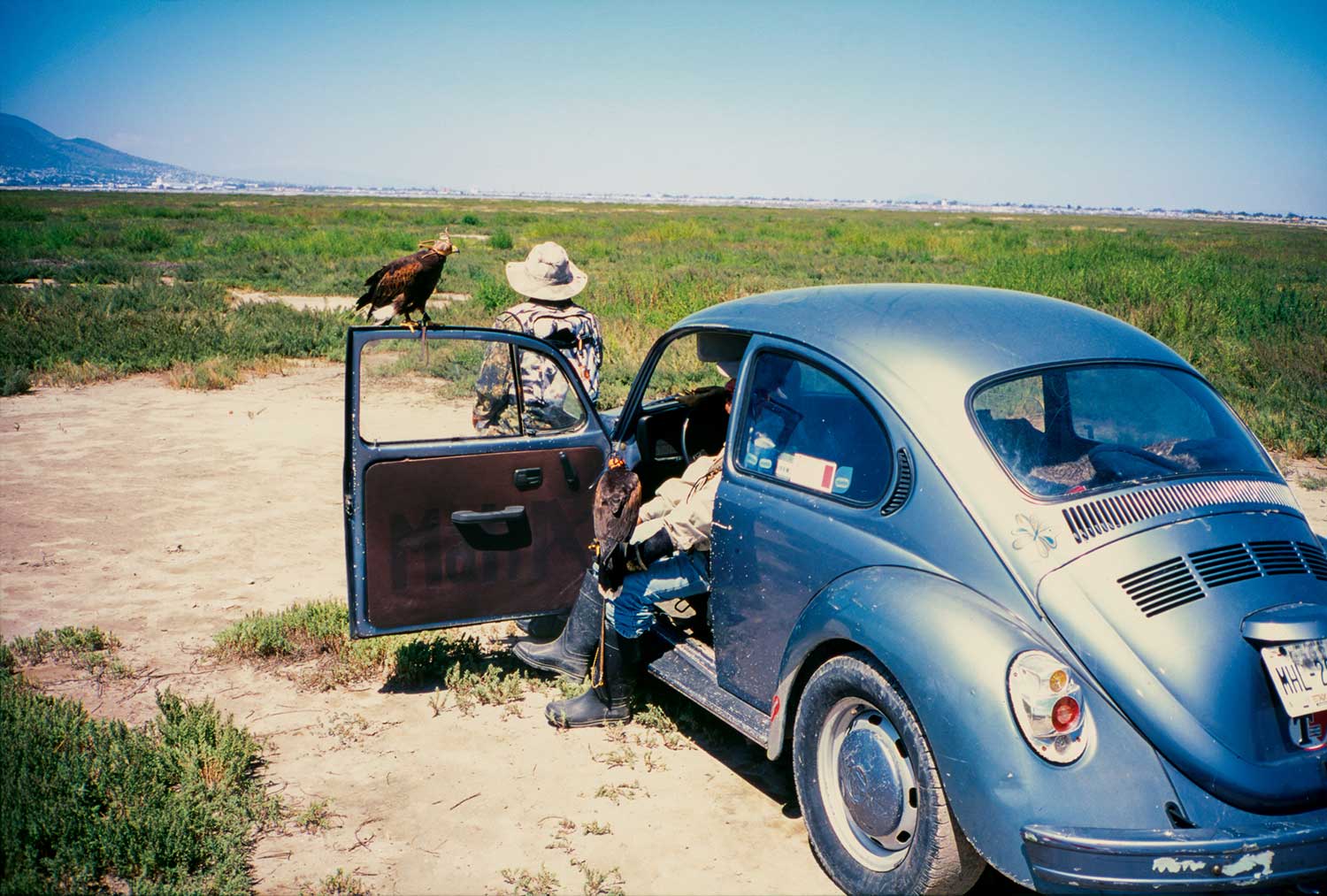
Courtesy the artist and Kurimanzutto, Mexico City/New York
In contrast to the artist’s more absurdist images that might make us laugh, the photographs with birds feel more serious. Birds are believed to be the closest relatives of the dinosaurs, and yet humankind has managed to train them. This symbiotic process, in some ways, means reining in and appropriating their animal strength. The animal becomes so merged with the human that the mutual submission arising between them is a kind of devotion to a freedom that, deep down, is known to be unobtainable. For Calderón, this existential concern manifests itself in a triangle of experiences and free associations—bird, bicycle, art—all representative, in their own way, of the aspiration to break free and transcend.
Read more from Aperture issue 236, “Mexico City,” or subscribe to Aperture and never miss an issue.
Translated from the Spanish by Elianna Kan. Visita gatopardo.com para leer este artículo en español.


























